 |
| August 10, 2021 | Volume 17 Issue 30 |
Designfax weekly eMagazine
Archives
Partners
Manufacturing Center
Product Spotlight
Modern Applications News
Metalworking Ideas For
Today's Job Shops
Tooling and Production
Strategies for large
metalworking plants
Bell unveils new high-speed vertical take-off and landing design concepts for U.S. military
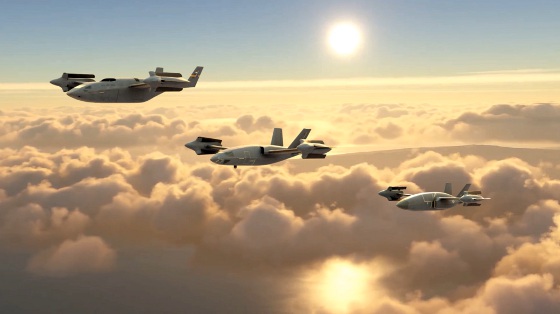
[Credit: Bell Textron]
The Bell-Boeing V-22 Osprey tiltrotor has proved to be an invaluable workhorse that has changed the way the U.S. military conducts amphibious assault, long-range infiltration and exfiltration, and resupply with a cruise speed and range twice that of the helicopters it replaced. Now Bell has revealed three new concepts that aim to become the next generation of tiltrotor tech.
Bell has been developing and providing high-speed vertical lift aircraft technology for more than 85 years, pioneering innovative vertical take-off and landing (VTOL) configurations like the X-14, X-22, XV-3, and XV-15 for NASA, the U.S Army, and U.S. Air Force. The lessons learned from the XV-3 and XV-15 supported the development of the V-22 Osprey.
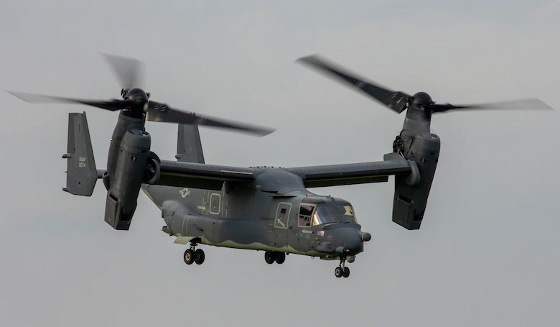
A CV-22 Osprey assigned to the 21st Special Operations Squadron flies over Yokota Air Base, Japan, June 15, 2020, during exercise Gryphon Jet, an integrated training exercise focused on improving interoperability throughout the special operations community. [Credit: U.S. Air Force photo by Yasuo Osakabe]
Bell Flight released a few details on its latest tiltrotor configurations last week, showing three different high-speed vertical take-off and landing (HSVTOL) concepts. The mock-ups are presented as small, medium, and large designs, with the smallest looking like an unmanned aircraft and each sporting different intake and exhaust configurations. Each aircraft features wingtip rotors that provide vertical lift and fold away in flight.
Bells says the HSVTOL design concepts include the following features:
- Low downwash hover capability;
- Jet-like cruise speeds over 400 knots;
- True runway independence and hover endurance;
- Scalability to the range of missions from unmanned personnel recovery to tactical mobility; and
- Aircraft gross weights ranging from 4,000 lb to over 100,000 lb.
The new designs also appear much more stealthy, so that is a definite upgrade from VTOL aircraft of the past. The V-22 Osprey has a top speed of 350 mph (304 knots), for example, so pumping up the speed on a new design to 460 mph (400 knots) would be a significant step-change. Weight-wise, the vertical takeoff max gross weight for the V-22 is 52,600 lb. Almost doubling that -- for the largest option -- would also be impressive.
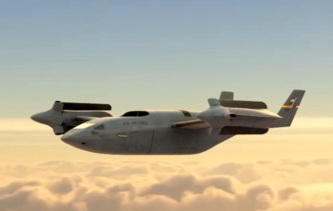
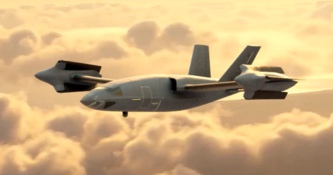
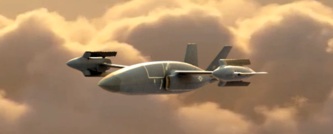
Bell says its new HSVTOL capability development "is critical to future mission needs offering a range of aircraft systems with enhanced runway independence, aircraft survivability, mission flexibility, and enhanced performance over legacy platforms." The convergence of tiltrotor aircraft capabilities, digital flight control advancements, and emerging propulsion technologies will help the company to evolve HSVTOL technology so it can meet these goals.
"Our technology investments have reduced risk and prepared us for rapid development of HSVTOL in a digital engineering environment, leveraging experience from a robust past of technology exploration and close partnerships with the Department of Defense and Research Laboratories," said Jason Hurst, vice president, Innovation, at Bell.
Few other details have been released, but a Forbes article has managed to secure an extra artist rendering from Bell of the three concepts sitting on the tarmac. This image clearly shows that each of the three designs are, indeed, tiltrotors, which is not apparent in the main image released by Bell to the press at the top of this article.
According to Forbes, "A centerline turbofan (intakes in the renderings may indicate twin engines) would effectively make these aircraft 'tri-jets' since it would join the turboshaft engines at each wingtip. This complex arrangement would need to enable the HSVTOL to achieve 400 knots in jet mode (Bell's aim) at the 30,000-foot altitude that Nissen [Jeff Nissen, program manager for Bell Flight's HSVTOL digital design efforts] hints it will cruise at."
An article in The Drive dubs the new designs "a new-generation convertiplane."
"Future 'convertible engines' could eventually provide HSVTOL designs with a powerplant that can switch between turboshaft and turbofan modes, eliminating the need for separate lift and cruise engines," The Drive article speculates. "With no air intakes visible on the wingtip nacelles, this could also suggest some form of hybrid-electric propulsion for the rotors, as well, which would use the main jet powerplant to provide gobs of electrical power to drive the rotors during terminal flight modes."
But at this point in development, the exact makeup of the propulsion systems is conjecture. It will be interesting to see what information Bell releases next.
Bell's concepts are part of the U.S. Air Force's (USAF) HSVTOL Concept Challenge, which is spearheaded by AFWERX, a special USAF program office that aims to fast-track technology development, coordinating efforts with airmen, government, industry, and academia. For the HSVTOL Challenge, the near-term goal is "to produce an HSVTOL conceptual framework that maximizes the trade space of speed, range, survivability, payload, size, and flexibility to carry out missions across the full spectrum of conflict and political scenarios." Critical mission profiles include infiltration and exfiltration of special operations forces and equipment, personnel recovery, aeromedical evacuation, and tactical mobility.
"This challenge gives leading-edge innovators, from small entrepreneurs to global enterprises, the chance to pursue a streamlined path to government funding," said Mark Rowland, Innovation Actualizer for AFWERX's Las Vegas Hub. "It's a unique opportunity to team up with visionaries in the U.S. Department of Defense ecosystem while accelerating independent endeavors in the HSVTOL space."
Sources: Bell Flight, Forbes, The Drive, U.S. Air Force, AFWERX
Published August 2021
Rate this article
View our terms of use and privacy policy
